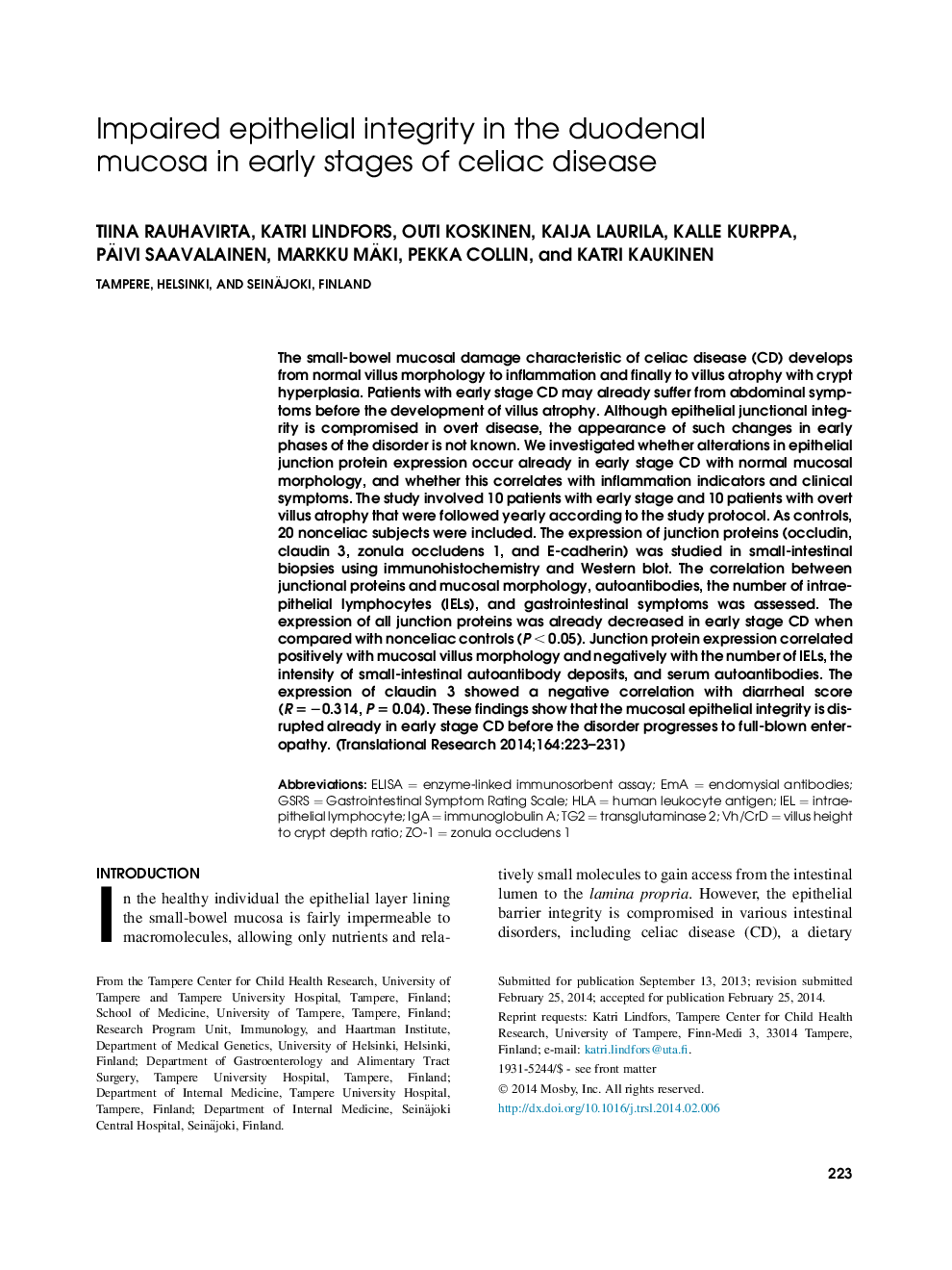| Article ID | Journal | Published Year | Pages | File Type |
|---|---|---|---|---|
| 3840568 | Translational Research | 2014 | 9 Pages |
The small-bowel mucosal damage characteristic of celiac disease (CD) develops from normal villus morphology to inflammation and finally to villus atrophy with crypt hyperplasia. Patients with early stage CD may already suffer from abdominal symptoms before the development of villus atrophy. Although epithelial junctional integrity is compromised in overt disease, the appearance of such changes in early phases of the disorder is not known. We investigated whether alterations in epithelial junction protein expression occur already in early stage CD with normal mucosal morphology, and whether this correlates with inflammation indicators and clinical symptoms. The study involved 10 patients with early stage and 10 patients with overt villus atrophy that were followed yearly according to the study protocol. As controls, 20 nonceliac subjects were included. The expression of junction proteins (occludin, claudin 3, zonula occludens 1, and E-cadherin) was studied in small-intestinal biopsies using immunohistochemistry and Western blot. The correlation between junctional proteins and mucosal morphology, autoantibodies, the number of intraepithelial lymphocytes (IELs), and gastrointestinal symptoms was assessed. The expression of all junction proteins was already decreased in early stage CD when compared with nonceliac controls (P < 0.05). Junction protein expression correlated positively with mucosal villus morphology and negatively with the number of IELs, the intensity of small-intestinal autoantibody deposits, and serum autoantibodies. The expression of claudin 3 showed a negative correlation with diarrheal score (R = −0.314, P = 0.04). These findings show that the mucosal epithelial integrity is disrupted already in early stage CD before the disorder progresses to full-blown enteropathy.
